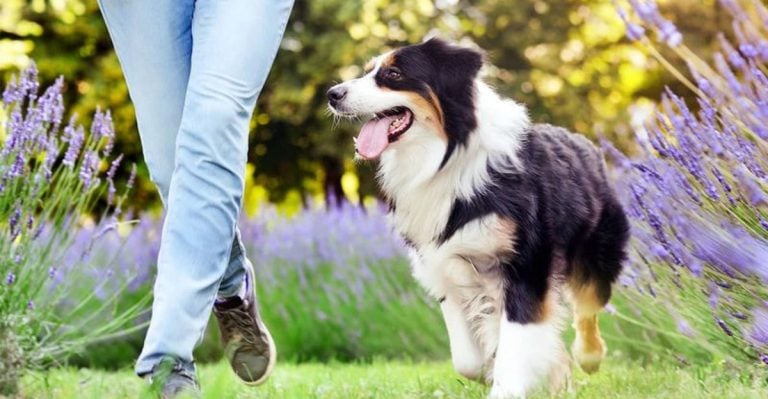15 Signs Your Dog Understands More Than You Think

For centuries, dogs have been man’s loyal companions, but science increasingly proves they are far more intelligent than we once thought. Certain breeds, like Border Collies, Poodles, and German Shepherds, demonstrate exceptional cognitive abilities, solving problems and showing signs of emotional intelligence. So, let’s take a look at 15 remarkable signs that prove your dog understands more than you think.
Recognizing Their Names

Dogs have a remarkable ability to understand human speech, especially when it comes to recognizing their names, even within complex sentences. They can distinguish their names from other words, and this recognition is strengthened by tone and repetition. Over time, they learn to associate their name with attention or action.
Following Pointing Gestures

A 2002 publication in ScienceDirect shows that when a human points at an object, canines instinctively look in that direction rather than at the person’s hand. This suggests a level of social intelligence similar to that of young children. Unlike wolves, domesticated dogs have evolved to interpret these cues for cooperation.
Learning Commands And Vocabulary

Some pups can learn hundreds of words and commands. Border Collies, such as the famous Chaser, have been documented recognizing over 1,000 words. Dogs understand commands through associative learning, linking specific words to actions or objects. They also grasp context, distinguishing between “sit” and “sit over there” based on additional cues.
Understanding Emotions From Facial Expressions

Using eye-tracking technology, a 2017 study published in PMC found that dogs focus on different areas of a human face to discern emotions. They react uniquely to happy, sad, angry, or fearful expressions. When their owner appears distressed, dogs often show signs of concern or try to offer comfort.
Predicting Daily Routines

The ability to predict human routines proves how intelligent dogs are. They anticipate meal times, walks, and bedtime based on environmental cues and habitual behaviors. Some know when their owners are about to leave for work by recognizing subtle signals, like picking up keys or putting on shoes.
Responding To Intentions

Dogs often respond to their owners’ intentions before being given explicit commands. A 2023 research published in PMC showed that canines can anticipate actions based on subtle body language, such as leaning forward before throwing a ball. Service dogs are not merely trained to follow commands but are taught to read human behavior actively.
Distinguishing Between Different People

Another skill dogs possess is the ability to tell one person apart from another through voice, scent, and appearance. Dogs show excitement when they recognize familiar faces and voices. The ability of animals to match voices with faces, demonstrated in a study published in Animal Behavior, signals a complex recognition of identity.
Responding To Human Speech Tone

Beyond words, dogs also understand tone and inflection. Studies at Eotvos Lorand University found that these pets process tone and meaning in different areas of their brains, much like humans do. These pets can differentiate between praise, neutral, and opposing tones, which explains why dogs often respond better to encouraging tones during training.
Mirroring Human Behaviors

Emotional contagion, a situation where someone mirrors someone else’s emotions and behaviors, has been observed in dogs. A study published in PLOS ONE indicated that our canine companions yawn when we do, a trait associated with empathy in humans. Additionally, they can adjust their energy levels to match their owner’s mood.
Remembering Past Events (Episodic Memory)

Like humans, dogs also exhibit episodic-like memory by recalling specific past events. PubMed research shows that dogs can remember and replicate actions they’ve observed, even without training. Unlike simple habit-based memory, episodic memory suggests a more advanced cognitive process, like when a dog remembers where it buried bones.
Recognizing When They Are Being Talked About

This may surprise you, but dogs can tell when humans are talking about them, even when their names are not mentioned. They react when they hear familiar words associated with themselves, like “walk” or “treat.” In fact, according to research in Psychological Science, pets can show signs of jealousy when another pet is complimented.
Helping Humans In Need

Dogs often assist humans in distress, even without training. They often attempt to comfort crying individuals by nuzzling or licking them. Beyond that, dogs also attempt to open doors or seek help when their owner is unresponsive. Their instinct to help suggests an understanding of human emotions and needs.
Noticing Changes In Human Health

Medical detection dogs can identify diseases like cancer, diabetes, and seizures by sensing changes in body odor or subtle shifts in behavior. Some pet puppies naturally alert their owners to impending migraines or drops in blood sugar without formal training. Such an ability demonstrates dogs’ heightened awareness of human physiology.
Understanding The Concept Of Fairness

Canines are keenly aware of unequal treatment and often express frustration when they’re treated less favorably than other dogs. In an experiment published in PNAS, when one dog gets rewarded for a task while another does not, the unrewarded dog usually refuses to participate further. Some may protest when others get more attention.
Understanding Object Permanence

Dogs don’t just forget about things when they’re out of sight. If you hide their favorite toy under a blanket or behind furniture, they’ll go straight to work searching for it because they know it’s still there. This skill helps them track objects, remember hiding spots, and even predict where things will pop up next.





